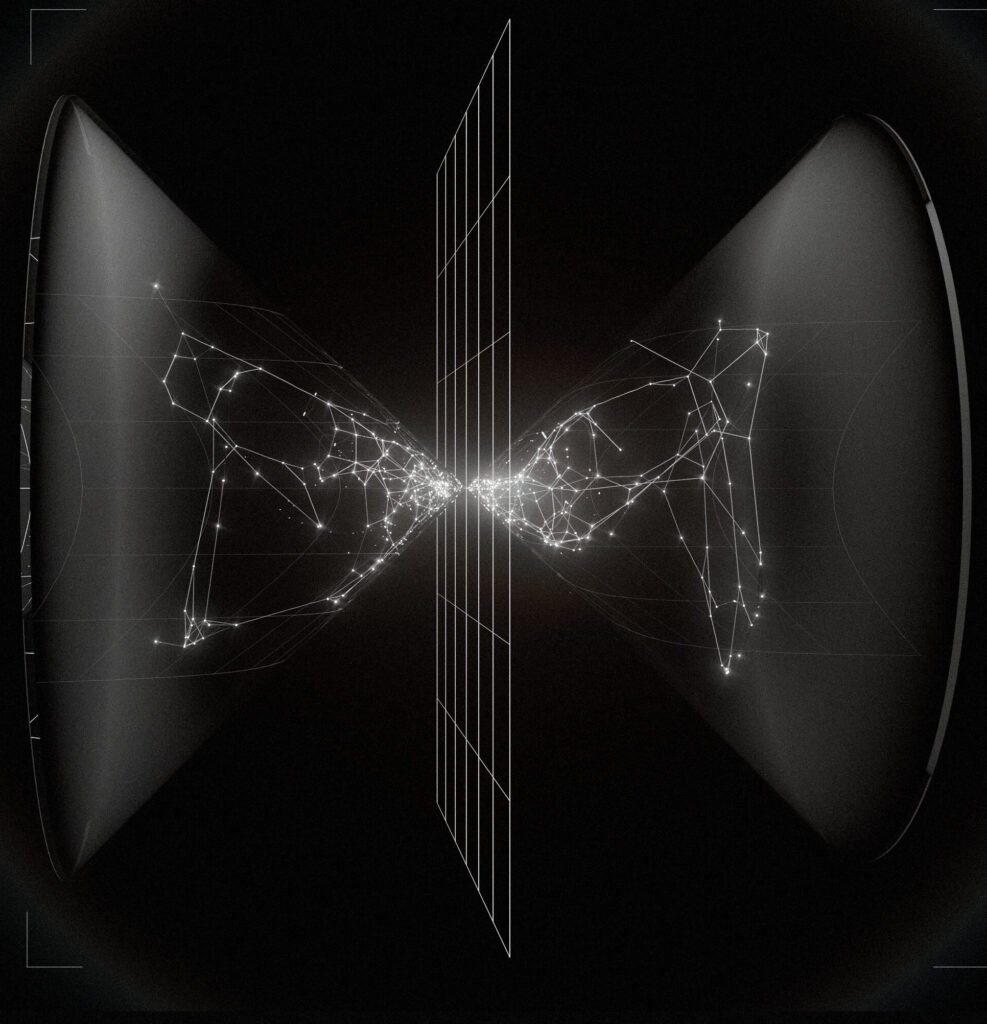Weird Theories About Origin Of The Universe
- Team WOS
- 15 Mins Read
Why are galaxies moving away from us or it’s we who are receding away? How did the Universe begin? Let’s look at some of the weird theories about the origin of our Universe. Watch this video for better understanding!
Newton was a believer and oh, he feared god, and that’s why his idea of the origin of the Universe was about perfection and absoluteness. Because God has created the cosmos, it cannot be imperfect. A static world, a closed universe governed by the laws of classical mechanics and held together by the force of gravity, and produced by the Almighty. But one fortunate day, when great astronomer Edwin Hubble observed the universe through his telescope, he found out that galaxies are showing redshift, that’s just a technical term to say that something is moving away from you.
But what does this mean? Why are galaxies moving away from us or it’s we who are receding away? If everything is moving away, then was there sometime when all these were much closer to us? Let’s dive deep into the origin of our Universe.
The currently accepted theory of the Big Bang is the answer to all these questions. Extrapolating the situation backward, there must be a point in time when all the matter in the universe were closer to each other, and from where the expansion started. This can be noted down as the origin point of the cosmos. It was not the first time that anybody thought of the world this way but the philosophical and theological components of those thoughts set them apart from physics point of view.
Ancient Greek Philosophy
For example, let’s go to ancient Greece. From the Milesian School of Thought, Heraclitus, a Greek philosopher, assumed a world of perpetual change. An eternal changing universe unfolding along two extremities of positive and negative forces, underlying a single unity was his conception of reality. This may sound similar to Relativity’s concept of the expanding universe but they differ at a very philosophical level. But the point here is that, the big bang theory required the universe to change and expand unlike the Newtonian concept of static unchanging reality.

Heraclitus, Greek philosopher assumed a world of perpetual change unfolding along two extremities of positive & negative forces.
The term Big Bang was coined not by Hubble or Einstein as some may assume, but by physicist Fred Hoyle in the 1940s to mock this very concept of origin of the world. He was working on an alternate theory regarding the expanding universe, called Steady State theory, that proposed the Universe is expanding but that does not mean it was closer to each other in the past. Every moment the universe expands, it creates new matter in the stretched-space from the energy of space unfolding.
So there was no beginning but the universe is eternal and always potent to creation. This theory enjoyed some minority support in the scientific mainstream until the mid-20th century. It is now rejected by the vast majority of researchers, as the observational evidence points to the Big Bang cosmology with a finite age of the universe, which the steady-state model does not predict. Still his term “Big Bang” was adopted for the theory of origin, maybe because it sounds cool.
Einstein's Role
Was there no one before Hubble who ever thought of the universe expanding? Well yes and no. Einstein’s brilliant mind got us General theory of Relativity and his equations were enough to prove that the model of the universe as per the field equation was of expansive nature but Einstein was reluctant to believe so which led to his biggest blunder, well that’s what he called it. We have explained Einstein’s and Hubble’s quest for the expanding nature of our Universe in a detailed video. Click here to watch it.
There were many like Alexander Freedman who solved Einstein’s field equation and presented the solution of a non-static universe but Einstein again did not pay any attention to it. Maybe his theory was already so revolutionary that he avoided any further means to break another scientific stereotype.
Universe is a "cosmic egg"
In 1927, a Belgian Catholic priest, Georges Lemaitre, who was also an astronomer and professor of physics, proposed a new hypothesis that the world is a cosmic egg and the whole universe was contained in this small volume of egg that later expanded to become the current form of universe. Not only theoretically but he also worked out the maths which can be seen as a predecessor to the Hubble law i.e. every galaxy is moving away and speed of recession of galaxies is directly proportional to the distance of the galaxy from us.

The earliest idea of the “cosmic egg” comes from some of the Sanskrit scriptures. The Sanskrit term for it is Brahmanda (ब्रह्माण्ड) which is derived from two words – ‘Brahma’ (ब्रह्मा) the ‘creator god’ in Hinduism and ‘anda’ (अण्ड) meaning ‘egg’. Certain Puranas such as the Brahmanda Purana speak of this in detail.
The proportionality constant was later named as Hubble constant (H). The Hubble constant is expressed in the unit of inverse of seconds. So the Inverse of the Hubble constant is time, not any other time but the time of the universe from the point of Big bang to now. Based on the current value of the Hubble constant, the age of the universe is calculated roughly to 13.8 billion years.
Einstein vs Bohr Historic Debate
Lemaitre met Einstein at Solvay Conference 1927 in Brussels and talked about his theory but Einstein was still not ready to accept that. You all may have seen the world famous photograph of the Solvay conference consisting of every known physicist of that time. That event was surely the turning point in the history of science. From there, the great Bohr vs Einstein debate on Quantum mechanics started. Do check out this video to know more about that historic debate.
Einstein always believed that everything is certain, and we can calculate everything. That’s why he rejected quantum mechanics, due to its factor of uncertainty.
Up to the start of World War II, the origin theory of the universe was widely accepted and was already in the scientific discourse. In the 1940s a famous paper was published, famous due to its catchy name, Alpha-Beta-Gamma paper, each denoting the name of physicists Ralph Alpher, Hans Bethe and Georges Gamow respectively. They worked on Big Bang Nucleo-synthesis which showed what must have happened in the first few minutes of the big bang. Let’s discuss a specific portion.
Due to the very high temperature of the early few minutes of the universe, electrons were still not attached to the nucleus structure of the atom as the force required to bind the electron in the atom was outplayed by the heavy kinetic energy of the electron. First complete atom consisting of proton, electron and neutron was formed 380,000 years after the Big bang. Temperature of the universe was reduced to just 3000 Kelvin.
Cosmic Microwave Background Radiation
When the electrons combined with the nucleus, the photons produced during the Big Bang finally escaped the electronic attraction from the “free non-consumed electrons” and this caused the spread of photons throughout the universe. Time passed and the photons lost their energy. As energy is inversely proportional to the wavelength of the radiation, photonic radiation shifted from gamma rays to microwave radiation.

Cosmic microwave background (CMB), in Big Bang cosmology, is electromagnetic radiation which is a remnant from an early stage of the universe, also known as “relic radiation”.
Thus the whole structure of the universe has been covered with the blanket of this leftover radiation and this is called “Cosmic Microwave Background”. The biggest proof to assert that the Big Bang hypothesis is correct would be to find this Background radiation which is at a constant temperature of 2.7K with some little irregularities.
The story of its discovery is hilarious. In 1964, scientist Robert Wilson was doing an experiment for telephonic transmission through dish antennas in AT&T Lab, in Manhattan. He was getting a lot of noise in the signal and he checked the antennas many times by cleaning it, washing it, fleeing birds from there and what not but was unable to solve the issue.
Around the same time, in Princeton University, Robert Dicke was getting ready to detect the CMB radiation and when he heard about Wilson’s incident, he got the clue. This noise he was receiving was none other than CMB itself and Wilson had discovered it accidently. Later both of them got Nobel Prize for their discovery and this fortunate incident paved the way for complete acceptance of the Big Bang theory.
So, is there an origin?
Well, from the analysis done up to now, it seems to suggest so. But the Big Bang theory is one solution to all questions posed by mankind about the origin and creation of the universe. Recently, a subgiant star nicknamed as “Methuselah Star” was discovered by astronomers. The age of the star calculated is roughly 14.6 billion years.
But wait a minute, the whole universe is around 13.8 billion years old, how can a star be older than the universe itself? Is this a calculation error, a calibration error or something revolutionary is bound to be discovered soon.

Big Bang theory is as simple and beautiful as it looks but it poses one of the biggest problems in theoretical physics and that is the problem of singularity.
More acceptances are not the proof of truth. Science is not like any religion and it can clearly accept its shortcomings, and can come back with better theories or hypotheses. Apart from Big Bang theory, there are many theories regarding the origin and structure of the cosmos. Big Bang theory is as simple and beautiful as it looks but it poses one of the biggest problems in theoretical physics and that is the problem of singularity.
Cyclic Model of the Universe
The condition of space and time at the Big Bang is quite similar to what is happening at the centre of Black holes. General relativity breaks down at these points, equations don’t work. We need a completely new theory that will combine both, general relativity and Quantum Field theory to unravel what’s happening at these two locations.
These theories of Quantum gravity like the String theory, Loop quantum gravity, Grand unification theories etc. removes the singularities and presents a cyclic model of the universe. No origin but a cyclic reversal of the order after a certain period of time. Also before understanding these topics, one must understand that the term Big Bang is a misnomer.
This does not mean that around 14 billion years ago there was a big blast or explosion as one may think of it. The Big Bang is simply a point when temporal dimensions get differentiated from the spatial dimensions. The origin is just the starting point of time and movement of time in forward direction is guided by the second law of thermodynamics.
Entropy never decreases so we always feel time moving forward and not backwards. This view was also supported by Stephen Hawking himself in his concept of imaginary time.
String Theory & Mirror Symmetry
Space and time are not two separate entities but are interchangeable to each other. In the case of Black hole mechanics, spatial coordinates get transformed into temporal coordinates and vice versa. So, maybe space always existed. Maybe the time prior to the Big Bang existed too but was it in the form of imaginary time?

Credit: Jonathan Franklin
String theory proposes a method of duality that space-time before point of origin and after the point of origin has mirror symmetry to each other and not only this, apart from our universe there are millions of parallel universes that exist in hyperspace. Loop quantum gravity has a new concept of Big Bounce, in which the universe, after a contraction phase, starts the whole process again and starts to expand.
Great physicist Roger Penrose, who finally received his much deserving Nobel Prize, is also known for his theory of Conformal Cyclic Cosmology. This theory states that the universe was not created once at a certain time period but instead it starts and ends in a cyclic stage and each cycle is called an Aeon. In India, there is a system of “Kalpas” which is a cyclic phase of the universe between a creation and dissolution.
Roger even had proposed to testify his theory by checking the heat signature of Cosmic Microwave Background. Variations in the Thermal hotspots of CMB must be due to Hawking Radiation of Black holes from the previous cycle of the universe.
The hidden mysteries in the universe
These are only scratching on the surface of all the mysteries hidden in the universe. Was there an origin? Is there a God? Or are we in one of the multi-universes existing in hyperspace?
These questions, to be honest, have no definitive answers even today and we must keep asking these because that’s the superpower we possess. Also, like I said earlier science is not a religion, so it’s okay to dethrone any theory sitting on the high pedestal but your theory must be better and more logical than the previous one.
Einstein did it, he single handedly dethroned Newton when he gave the theories of Relativity without even declaring the war against Newton.
What are your thoughts about the origin of our Universe? Which theory according to you is the closest to the truth about our very origin and fate? Let us know in the comments.
Share this article
Team WOS
We make people fall in love with science.
Share this article
Neil deGrasse TysonThe Universe is under no obligation to make sense to you.
Latest posts
We have learned many partial truths and some remain with us even when we are studying higher courses. Let’s look up such partial truths that are very common...
How do the animals and birds view the world around them? Do they perceive everything just like a human? Let's understand the basic anatomy of the eyes of...
What will the conditions be for the human body in space? How much difference a human being would feel while being in space? Space is scary and lonely, and conditions are...
Here is a list of the best science books that'll take you deep into the ocean of science. Books fueled the mighty revolutions in human history and produced...
World's most renowned scientists think that the cosmos has quantum consciousness. First of all, what exactly is consciousness? Scientists are actively engaged experimental tests of these ideas. One approach is to study brain-impaired patients to see if their information...
Trending Articles
Be it a nuclear race or space race, the world became a battlefield of knowledge. Science got entangled with politics. In 1947, Bumper WAC was the first manmade object to enter space.
Is ISRO The Best Space Agency? ISRO's incredible journey is the story of India’s jump to orbit! In 1962, APJ Abdul Kalam was selected for the job of rocket engineer at the Indian Committee for Space Research (INCOSPAR)...
Here is a list of the best science books that'll take you deep into the ocean of science. Books fueled the mighty revolutions in human history and produced...
You have heard of the ambitious dream of Elon Musk to colonize Mars in the coming decade. Well, many people ask what this fascination with Mars is? Why not...
The universe is filled with breathtaking views, shiny stars, glowing galaxies, pulsating magnetars, dark wandering planets, and whatnot. Let us take a trip to some magnificent and best travel spots in the solar system.
Blockchains can be understood simply as a transparent distributed ledger system. A ledger is a book or collection of accounts in which transactions...





































